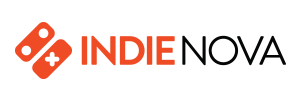1980-1984
繁荣,
兼容和崩溃
从 IBM 进入家用计算机市场开始,整个技术行业在 80 年代初期发生了根本变化。
IBM 是一家主导大型机的老牌科技巨头,这家公司的个人电脑(IBM PC)带领家用电脑市场走向专业化。苹果不怎么鼓励第三方开发人员进行开发,但 IBM 却分享所有信息,并拥有开放的体系结构。凭借 IBM 公司传奇般的声誉和强大的营销活动,IBM PC 很快取代了苹果,成为领先的标准,拥有了大量的软件和扩展。
但这些仍然是昂贵的高端产品。家用计算机普及量最多的还是诸如 Commodore 64,ZX Spectrum 和 MSX 系列等新型低端计算机。它们只需花费相当于 Apple II 或 IBM PC 售价的一小部分钱,就可以连接普通电视(而不是昂贵的显示器)使用。学校也开始将他们用作教育工具,同时它们也成为了出色的游戏机,从而带动诞生了全新一代的计算机。
与此同时,游戏机市场已经成为一个自由竞争的混乱局面。在雅达利 2600 的成功刺激下,好几家公司跃跃欲试,制作自己的游戏机。当时有十几种型号的游戏机在商店货架上并排竞争。
无数公司也跟随 Activision,成为第三方(开发商)并发行了自己的游戏。大多数都是质量糟糕或廉价的复制品。雅达利自己的水准也很差,失败的例子包括粗制滥造的《吃豆人》和臭名昭著的 E.T. 游戏。
尽管如此,大家的利润还是创下了历史新高,游戏公司和零售商们不断押注 1982 年假期的销售额会不断增长。然而,顾客们已经精疲力尽,不愿再购买游戏了。1983 年,美国市场陷入了大量的闲置库存,无法收回投资,最终导致市场崩溃。
1982 年 30 亿美元的生意,到 1985 年的才勉强赚了 1 亿美元。电子游戏从珍贵的产品直接变成了廉价的垃圾,美国的游戏机行业也因此而消亡。
这场危机也影响到了街机,因为随着电子游戏的风靡,很多公司都横跨这两个市场。尽管如此,电脑市场却还在满足那些渴望玩游戏的人们。不再像以前一样用塑封袋出售,电脑游戏开始走向专业化,EA 、 Interplay 、Origin 、Infocom 、Brøderbund 、SSI、Sierra On line 和 New World Computing 都是在这个时候成立的,并将统治市场直到 90 年代末。
与此同时,在日本,一个奇怪的巧合发生了。同一天——1983 年 7 月 15 日——两家公司发布了他们的第一款游戏机:任天堂 Famicom 和世嘉 SG-1000。这是未来的征兆。
1980-1984
The boom,
the clones and the crash
The entire tech industry radically changed in the early 80s, starting with the arrival of IBM in the home computer market.
An established tech giant that dominated mainframe computers, its IBM Personal Computer (or IBM PC) forced the home computer segment to professionalise. While Apple discouraged third-party developers, IBM shared all information and had an open architecture. Empowered by the company's legendary reputation and a powerful marketing campaign, IBM PCs quickly dethroned Apple and became the leading standard, with an extensive catalogue of software and components.
But these were still costly, high-end products. Vital in popularising home computers were new low-end machines like the Commodore 64, ZX Spectrum and the MSX line. Costing a fraction of an Apple II or IBM PC, they plugged into common TVs (instead of expensive monitors), began to be used as educational tools in schools and were great gaming machines, helping to introduce a whole new generation to computers.
Meanwhile, the console market had become a free-for-all mayhem. Fuelled by the success of the Atari 2600, several companies decided to jump on the bandwagon and make their own consoles, with over a dozen console models now competing side-by-side on store shelves.
Countless companies also followed Activision, becoming third-party developers and publishing their own games. Most were of terrible quality or cheap copies of popular titles. Atari themselves also had poor standards, with failures like its crude port of Pac-Man and the infamous E.T. game.
Still, profit was at a record high and companies and retailers kept betting on ever-increasing sales for the holidays of 1982. However, customers got so burnt out that they stopped buying. Left with massive dead stocks and no way to recover their investments, the US market crashed in 1983.
What was a 3 billion dollar business in 1982 barely made 100 million in 1985. Video games went from prized products directly to bargain bins, and the US console industry was for all purposes dead.
The crisis also affected arcades, since many companies were active on both markets, and the whole video game business declared a fad. Despite this, computers were eager to satisfy those hungry for more. No longer curiosities sold in ziplock bags, computer games started to professionalise. EA, Interplay, Origin, Infocom, Brøderbund, SSI, Sierra On-line and New World Computing were all founded around this time, and would rule the market until the late 90s.
Meanwhile, in Japan, an odd coincidence occurred. On the same day – July 15, 1983 – two companies released their first consoles: the Nintendo Famicom and the SEGA SG-1000. It was a sign of things to come.
《电脑 RPG 游戏史(The CRPG Book Project)》原书信息
英文原版主编:Felipe Pepe
原项目网址:https://crpgbook.wordpress.com/
授权协议:知识共享 署名-非商业性使用 4.0 国际许可协议 (CC BY-NC 4.0)

这本书历时四年,由 119 名志愿者共同完成。
《电脑 RPG 游戏史(The CRPG Book Project)》中文翻译版版权说明
中文翻译版项目取得了原书作者授权(原机核翻译小组以与现项目组整合),我们保留对翻译成果的所有权利。
所有文字均可免费使用但须注明出处,并禁止用于商业行为。
中文翻译的成果所有权属于各翻译者和相应贡献者。


